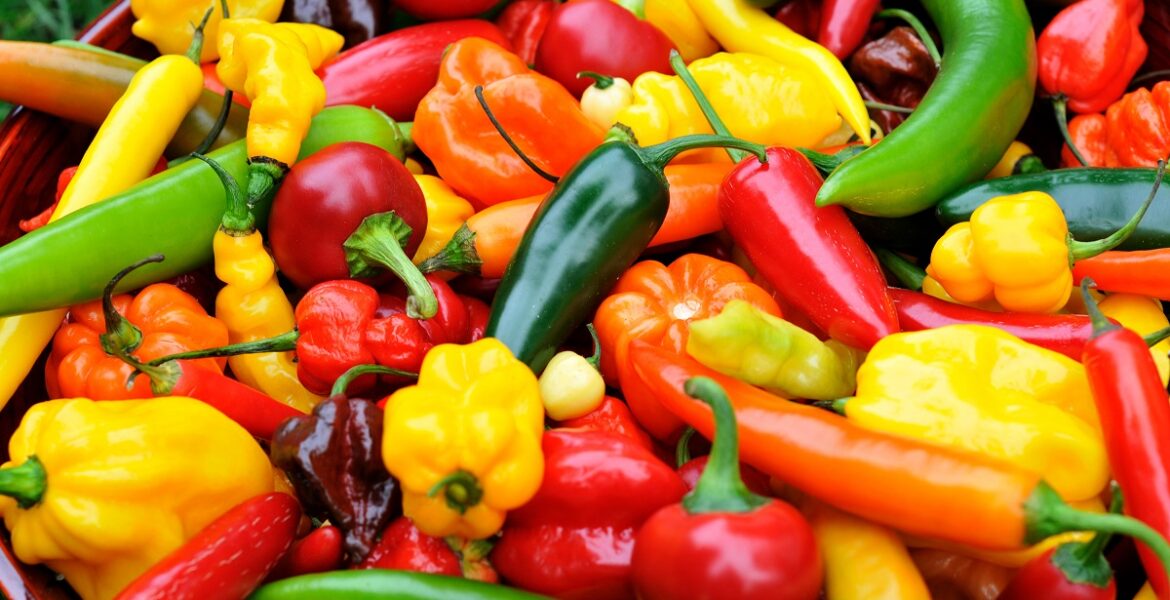Whether you like a gentle sizzle or a full-blown firestorm, chillies are the spice that make dishes sing (or scream). But there’s more to these peppers than just heat — they bring color, character, and a burst of cultural flair to cuisines across the globe. From smoky Mexican mole to the electric bite of Thai street food, each chilli has its own story to tell. Buckle up your taste buds — we’re going on a spicy adventure through some of the world’s most iconic peppers.
Jalapeño [Mexico]

Heat Level: 2,500–8,000 SHU
Flavor: Bright, grassy, slightly sweet
The jalapeño is one of the most widely recognized and consumed chillies in the world. Native to Mexico, it’s beloved for its approachable heat and vibrant flavor. Jalapeños are commonly used fresh in salsas, nachos, and guacamole, but they also shine when pickled or smoked to create chipotle peppers. Their firm flesh makes them ideal for stuffing — think jalapeño poppers — and their moderate heat makes them an excellent introduction to spicy foods.
Bird’s Eye Chilli [Thailand and Southeast Asia]

Heat Level: 50,000–100,000 SHU
Flavor: Clean, citrusy, piercing
Also known as prik kee noo in Thai, this small but mighty chilli is essential in Thai, Vietnamese, and Indonesian cuisines. Its clean, biting heat is ideal for fiery dishes like green papaya salad (som tam), Thai basil chicken, and spicy dipping sauces. Because of its size and potency, it’s often chopped finely or used whole to infuse oils or broths. It offers more than just heat — it imparts a lively, almost citrusy brightness that cuts through rich or creamy dishes beautifully.
Scotch Bonnet [Caribbean]

Heat Level: 100,000–350,000 SHU
Flavor: Fruity, sweet, tropical with a fierce burn
Named for its resemblance to a traditional Scottish tam hat, the Scotch bonnet is a staple in Caribbean kitchens. Its intense heat is balanced by a complex fruity flavor, making it essential in jerk seasoning, pepper sauces, and stews throughout Jamaica, Trinidad, and beyond. It’s often blended with allspice, garlic, and thyme to create the iconic jerk marinade. While it’s hot, it’s also remarkably flavorful — ideal for those who love spice with personality.
Kashmiri Chilli [India]

Heat Level: 1,000–2,000 SHU
Flavor: Mild, smoky, earthy
Kashmiri chillies are prized in Indian cuisine not for their heat, but for the rich red color and gentle warmth they bring to dishes. They’re often used in powdered form, imparting a beautiful hue to curries, biryanis, and tandoori preparations. The subtle smokiness and mild flavor allow other spices to shine, making them a favorite for chefs seeking balance and depth rather than sharp heat.
Piri Piri [Africa and Portugal]

Heat Level: 50,000–175,000 SHU
Flavor: Tangy, zesty, slightly sweet and smoky
Piri piri chillies — sometimes called African bird’s eye chillies — are believed to have originated in Mozambique and Angola and were later brought to Portugal through colonial trade routes. The famous piri piri sauce is a tangy, garlicky blend of the chillies, lemon, vinegar, and spices, often used to marinate chicken or seafood. While spicy, the heat is lively rather than overwhelming, and the chilli’s tangy undertone gives dishes a bold, unmistakable flavor.
Carolina Reaper [USA]

Heat Level: 1,400,000–2,200,000 SHU
Flavor: fruity and sweet before intense heat
Officially recognized as the hottest chilli in the world, the Carolina Reaper was developed in South Carolina by Ed Currie. Despite its brutal heat, it starts with a surprisingly sweet, fruity flavor — quickly overtaken by an intense, lingering burn. It’s primarily used in extremely hot sauces and spice challenges, often in small quantities or blended with milder ingredients. This chilli is not for the faint-hearted but has earned cult status among chilli enthusiasts and heat-seekers.
Shishito [Japan]

Heat Level: 50–200 SHU
Flavor: Sweet, grassy, mildly bitter
A far cry from the other fire-breathing varieties, shishito peppers are a gentle, flavorful chilli typically enjoyed charred or blistered with sea salt. Popular in Japanese izakaya dining, they’re often served as a simple appetizer. About one in ten will carry a touch of unexpected heat, giving them a fun element of surprise. Their thin skin and mild flavor make them ideal for pan-frying, grilling, or tossing into salads.
[Contributed By Anushka Gaikwad]











